Time needed: 6 minutes
Follow from Step 1 to Step 15 in order to create Omnet++ using Simulation projects. Quick guide to create Omnet++ simulation. Reach us , if you want an customize Omnet++ simulation projects works for scholars.
Download the omnet++ package from the following url, in the site there multiple verion of the omnet++ is listed. Select your needed version of omnet++, here we select the eversion omnet++ 4.6 , after that click the download button , which is displayed in the below of selected version
https://omnetpp.org/download/old.html
Select your needed version of omnet++, here we select the eversion omnet++ 4.6 , after that click the download button , which is displayed in the below of selected version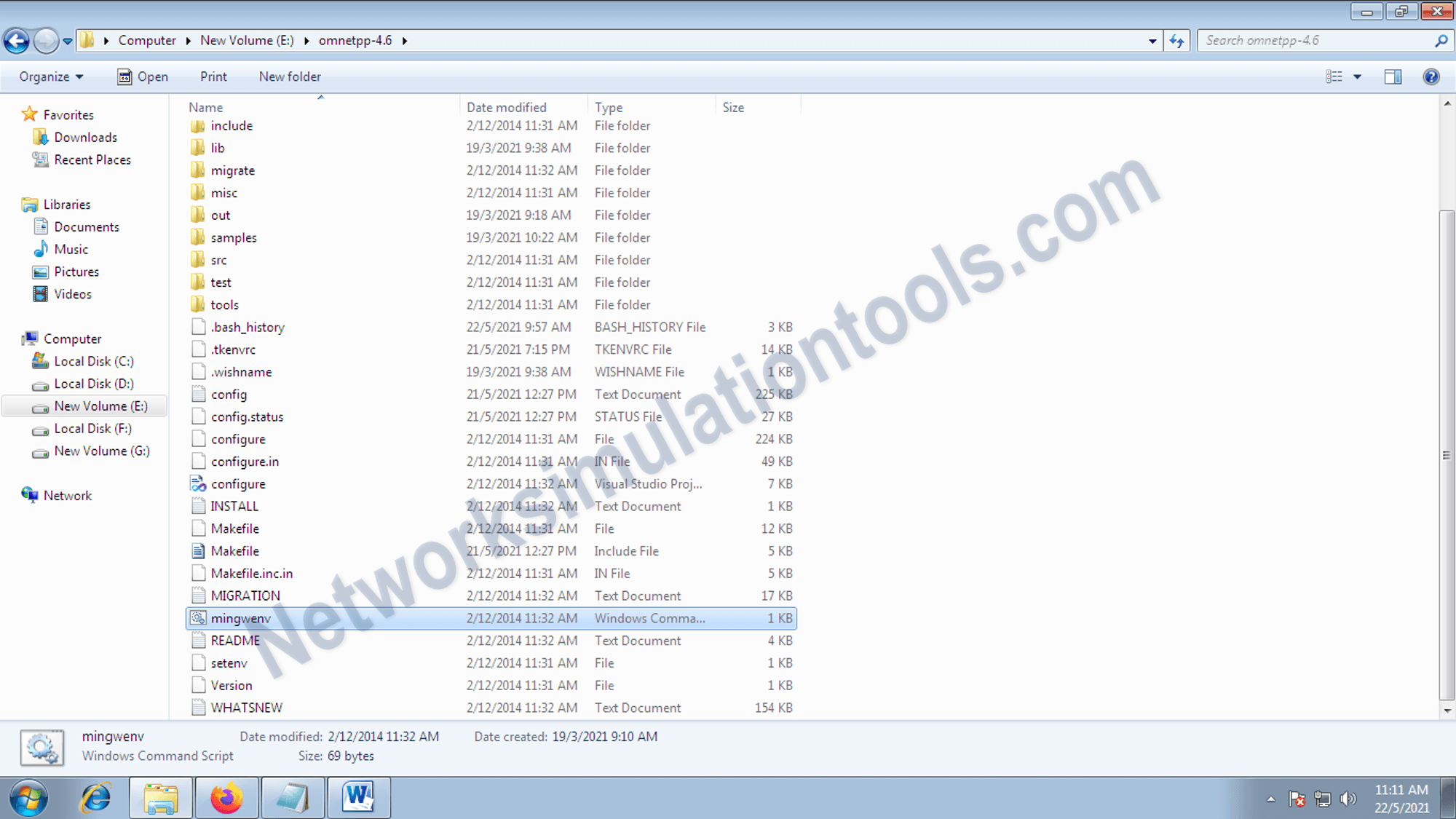
Open the mingwenv window. By double click mingwenv window from the omnet++ installed location.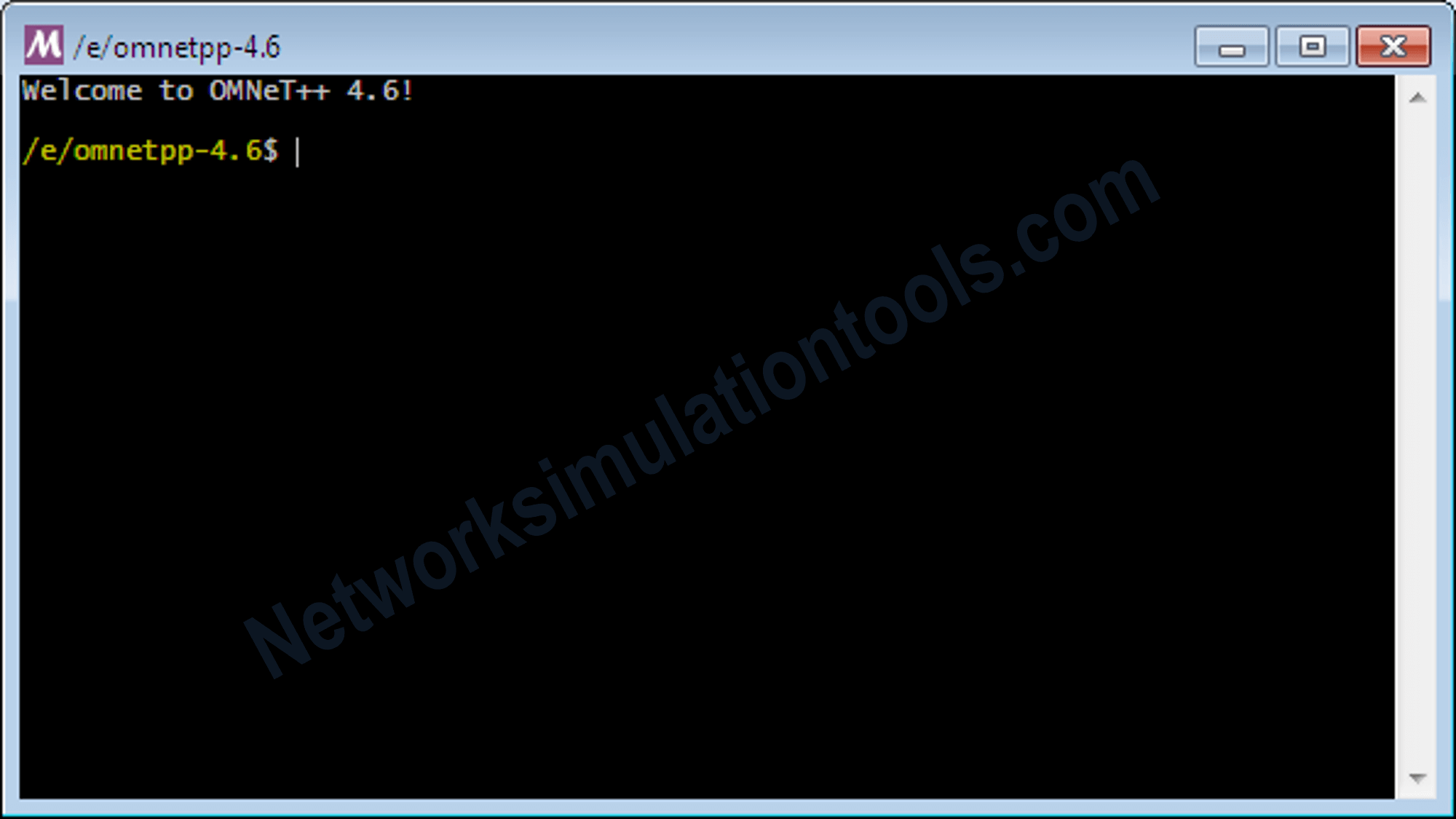
In the mingwenv command window ,
Execute the command -> . setenv
Execute the command -> ./configure
Execute the command -> make
Execute the command -> omnetpp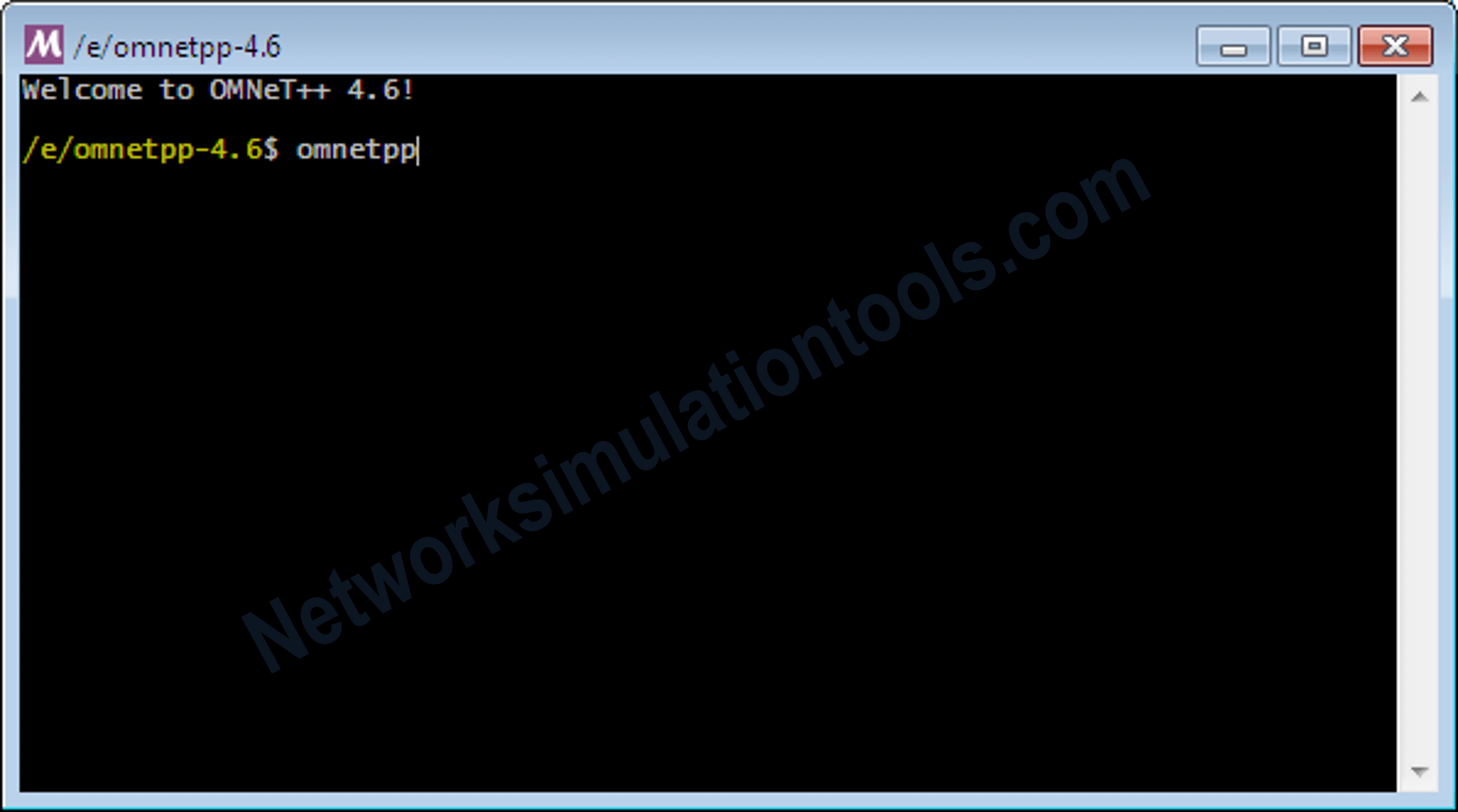
Select the stored workspace, with full location, to select the workspace , use the browse button and select the location and press ok button or type the full location . , like the below example
View the workspace with imported packages.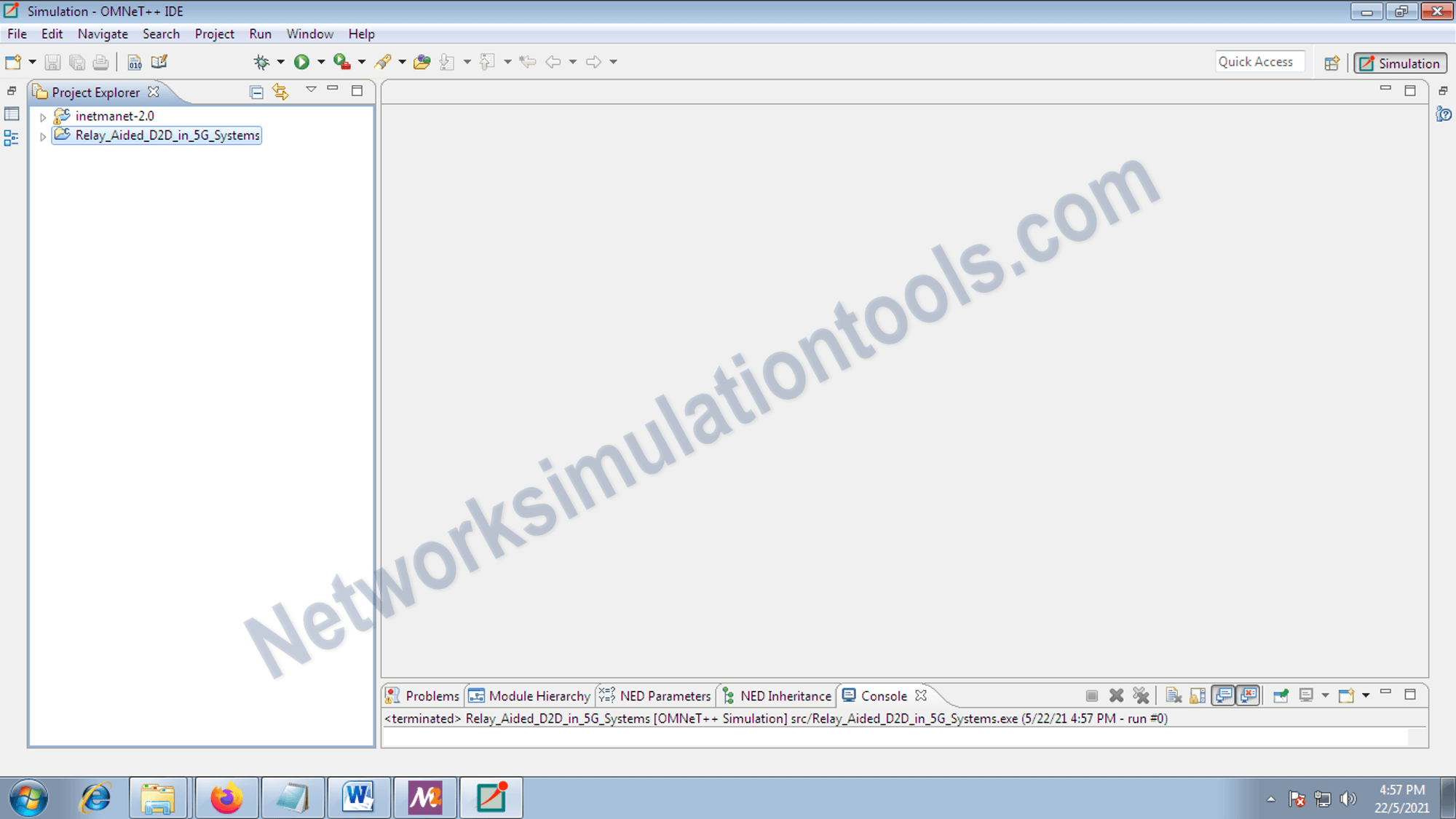
Main configuration file, with the file extension .ini
Source code for the networking file with the file extension .ned
For perform the build process,
First right click on the package folder name and select the clean local option from the list , like the below example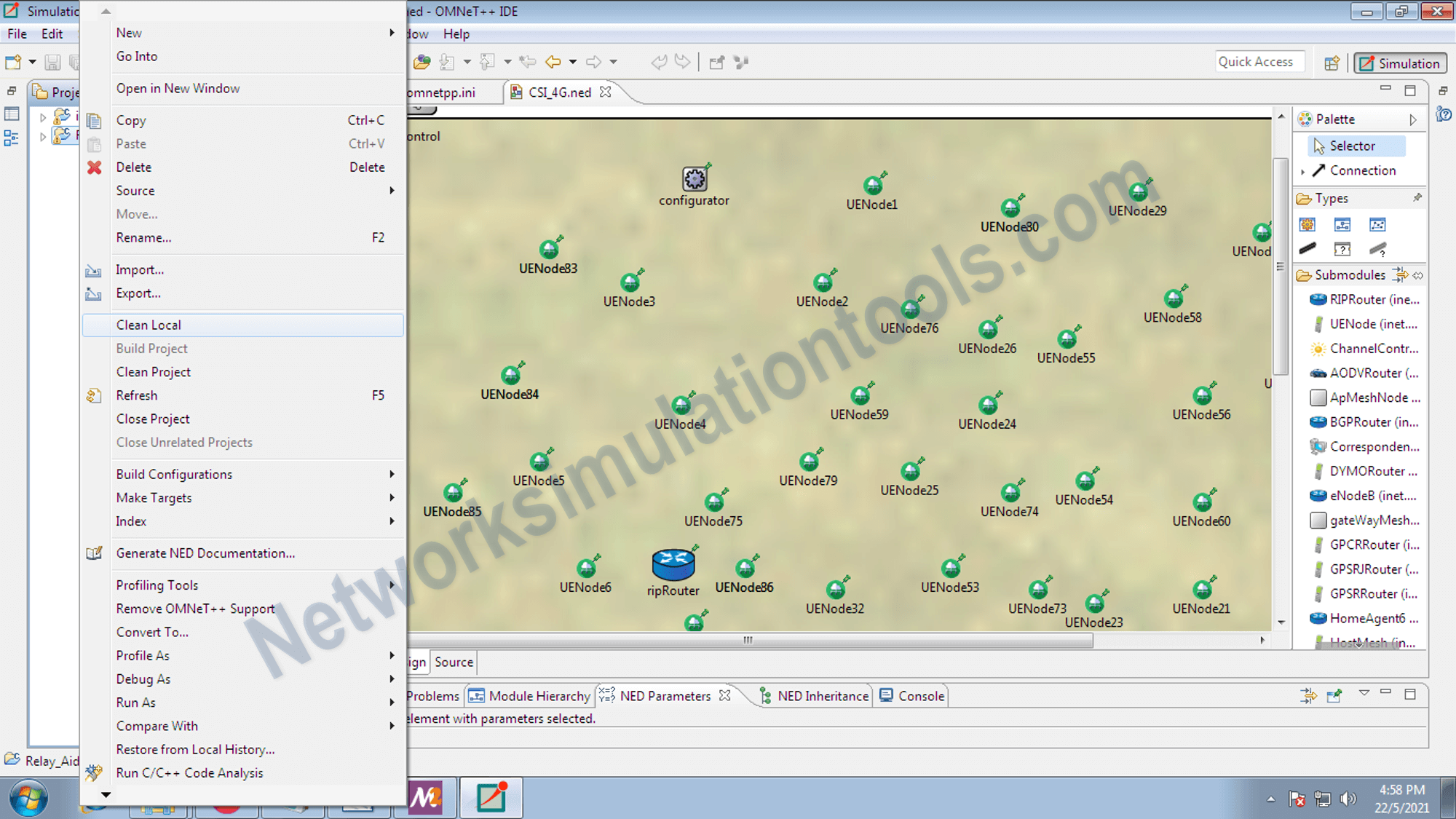
Next right click on the package folder name and select the clean project option from the list , like the below example
Next right click on the package folder name and select the Build project option from the list , like the below example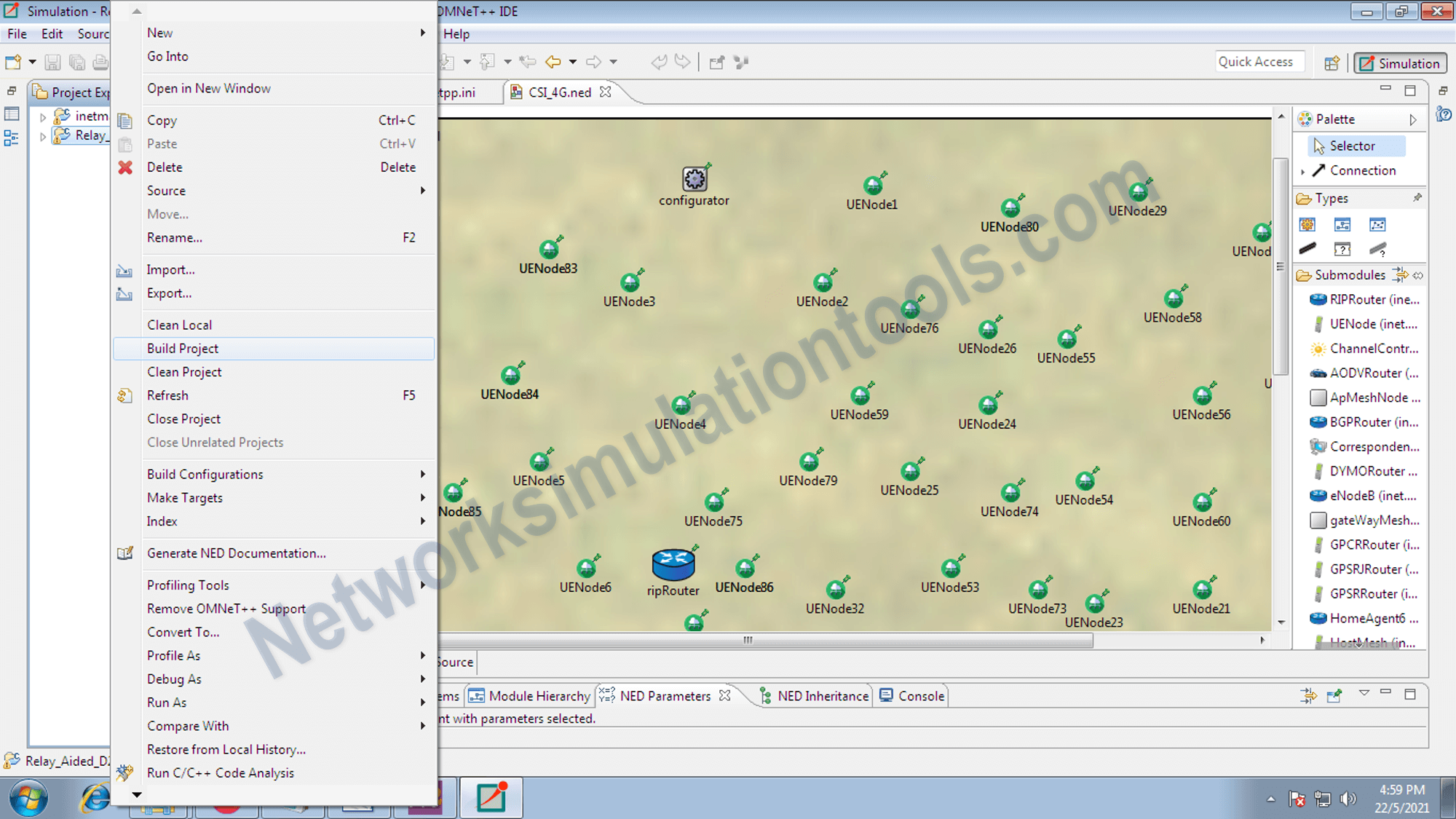
Next right click on the package folder name and select the RunAs omnet++ simulation option from the list , like the below example
select the RunAs -> omnet++ simulation option from the list , and choose the config name
Select the configuration name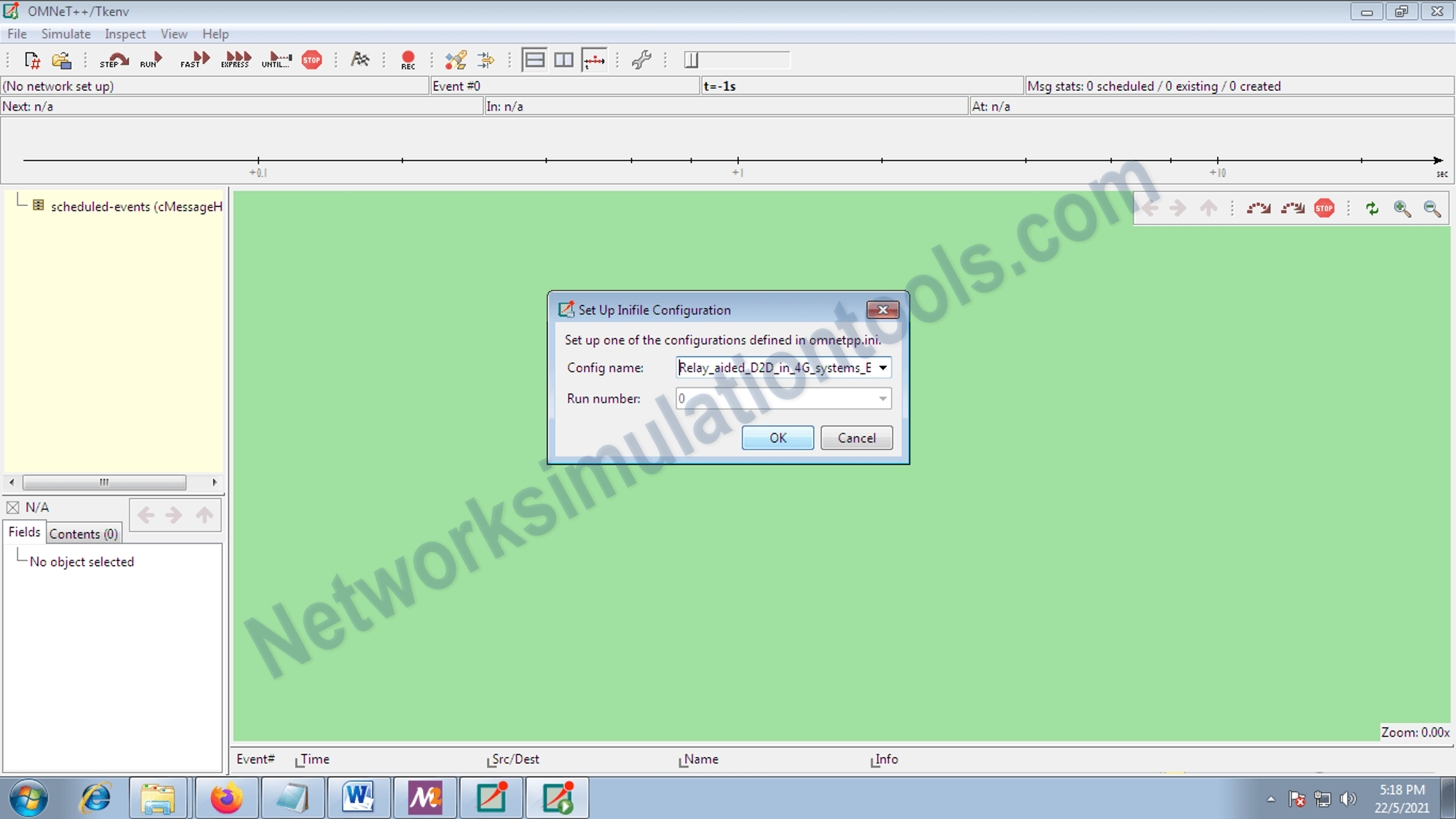
Press the run button and get the simulation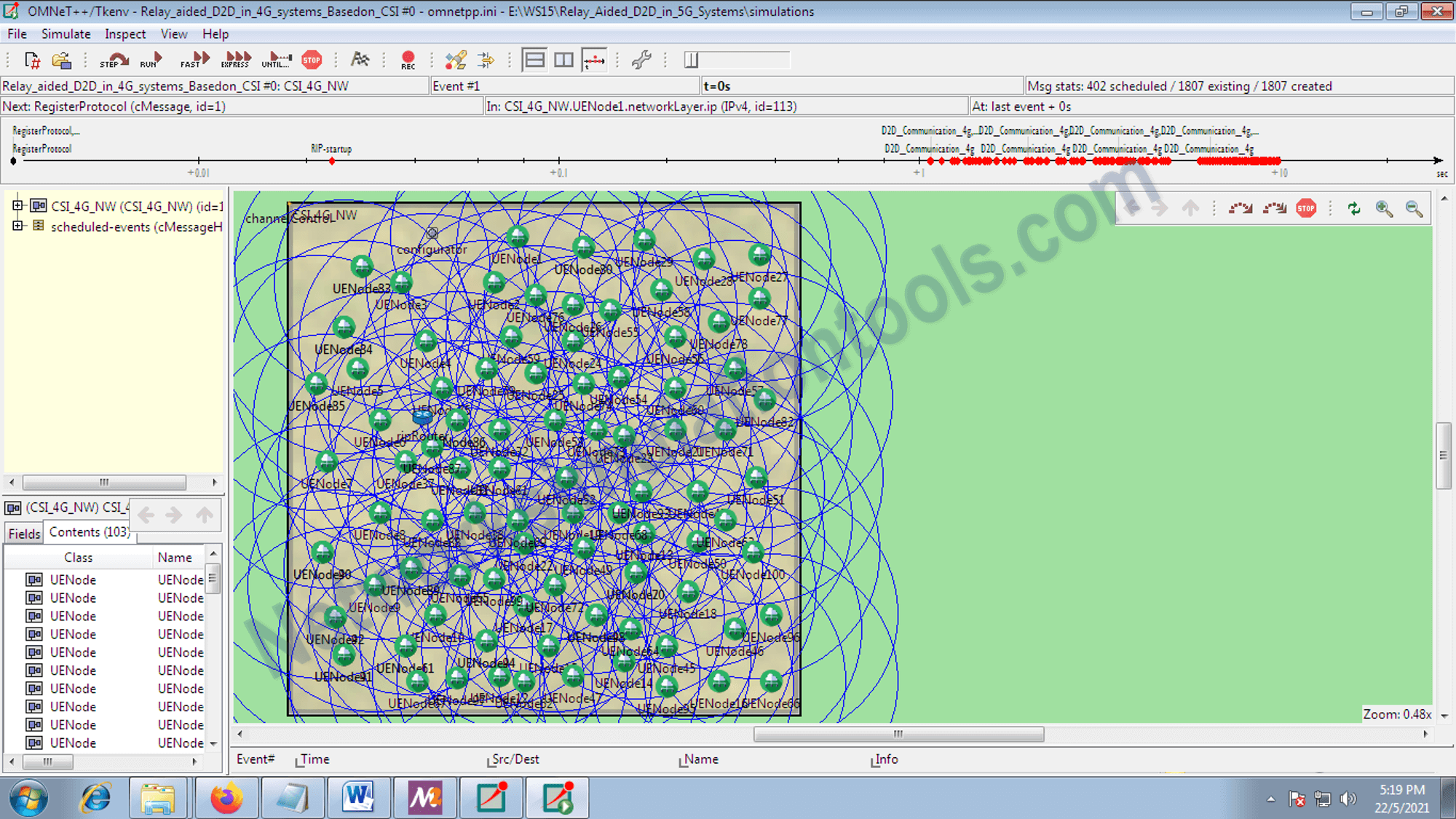
Press the run button and get the result simulation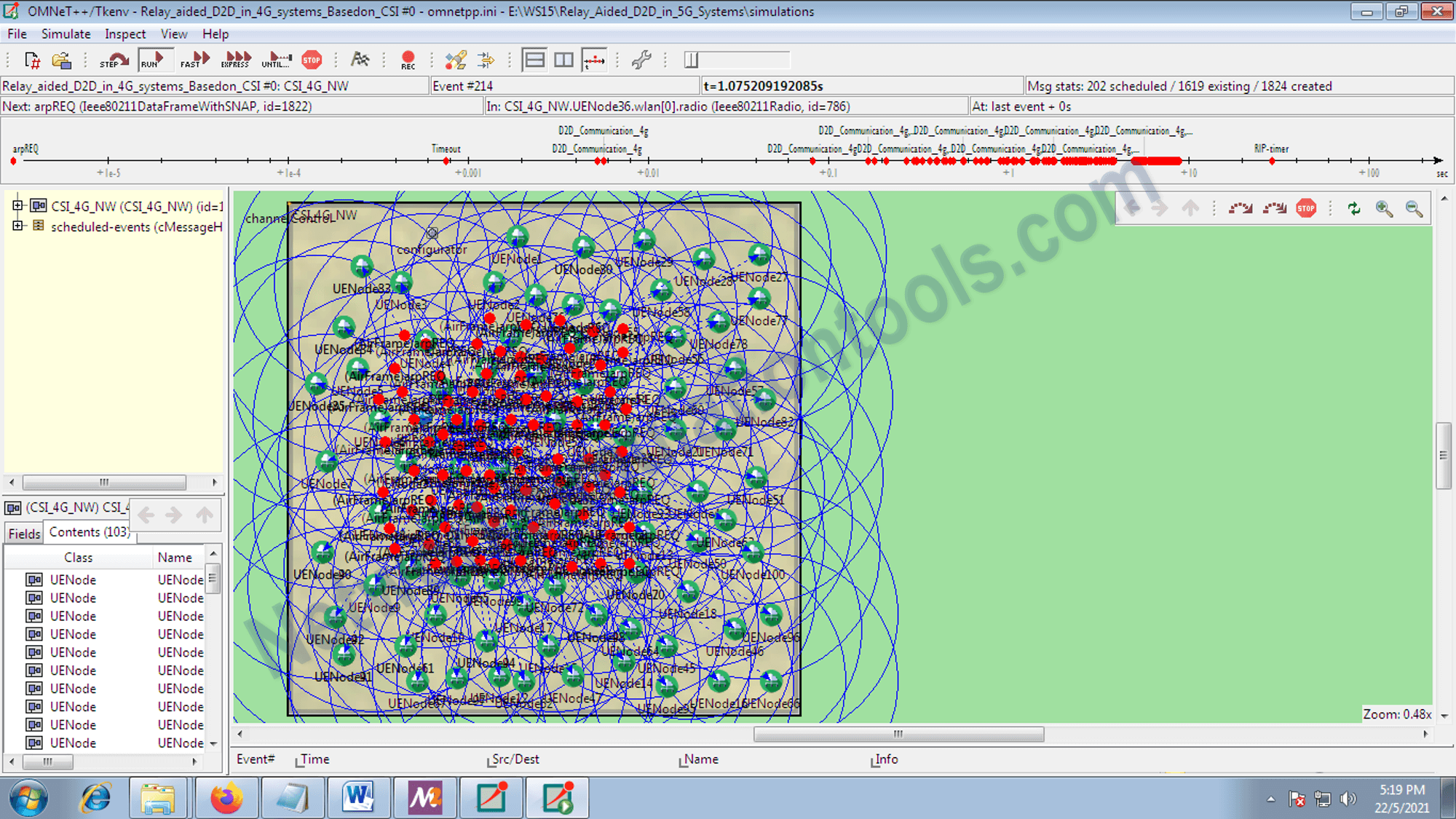
If you face any issues on How to Simulate Wireless Sensor Network in Omnet++, reach us to create an customize omnet++ simulation projects.
| Technology | Ph.D | MS | M.Tech |
|---|---|---|---|
| NS2 | 75 | 117 | 95 |
| NS3 | 98 | 119 | 206 |
| OMNET++ | 103 | 95 | 87 |
| OPNET | 36 | 64 | 89 |
| QULANET | 30 | 76 | 60 |
| MININET | 71 | 62 | 74 |
| MATLAB | 96 | 185 | 180 |
| LTESIM | 38 | 32 | 16 |
| COOJA SIMULATOR | 35 | 67 | 28 |
| CONTIKI OS | 42 | 36 | 29 |
| GNS3 | 35 | 89 | 14 |
| NETSIM | 35 | 11 | 21 |
| EVE-NG | 4 | 8 | 9 |
| TRANS | 9 | 5 | 4 |
| PEERSIM | 8 | 8 | 12 |
| GLOMOSIM | 6 | 10 | 6 |
| RTOOL | 13 | 15 | 8 |
| KATHARA SHADOW | 9 | 8 | 9 |
| VNX and VNUML | 8 | 7 | 8 |
| WISTAR | 9 | 9 | 8 |
| CNET | 6 | 8 | 4 |
| ESCAPE | 8 | 7 | 9 |
| NETMIRAGE | 7 | 11 | 7 |
| BOSON NETSIM | 6 | 8 | 9 |
| VIRL | 9 | 9 | 8 |
| CISCO PACKET TRACER | 7 | 7 | 10 |
| SWAN | 9 | 19 | 5 |
| JAVASIM | 40 | 68 | 69 |
| SSFNET | 7 | 9 | 8 |
| TOSSIM | 5 | 7 | 4 |
| PSIM | 7 | 8 | 6 |
| PETRI NET | 4 | 6 | 4 |
| ONESIM | 5 | 10 | 5 |
| OPTISYSTEM | 32 | 64 | 24 |
| DIVERT | 4 | 9 | 8 |
| TINY OS | 19 | 27 | 17 |
| TRANS | 7 | 8 | 6 |
| OPENPANA | 8 | 9 | 9 |
| SECURE CRT | 7 | 8 | 7 |
| EXTENDSIM | 6 | 7 | 5 |
| CONSELF | 7 | 19 | 6 |
| ARENA | 5 | 12 | 9 |
| VENSIM | 8 | 10 | 7 |
| MARIONNET | 5 | 7 | 9 |
| NETKIT | 6 | 8 | 7 |
| GEOIP | 9 | 17 | 8 |
| REAL | 7 | 5 | 5 |
| NEST | 5 | 10 | 9 |
| PTOLEMY | 7 | 8 | 4 |